Simulation Standard
Silvaco面向半导体工艺和器件仿真工程师推出的技术刊物
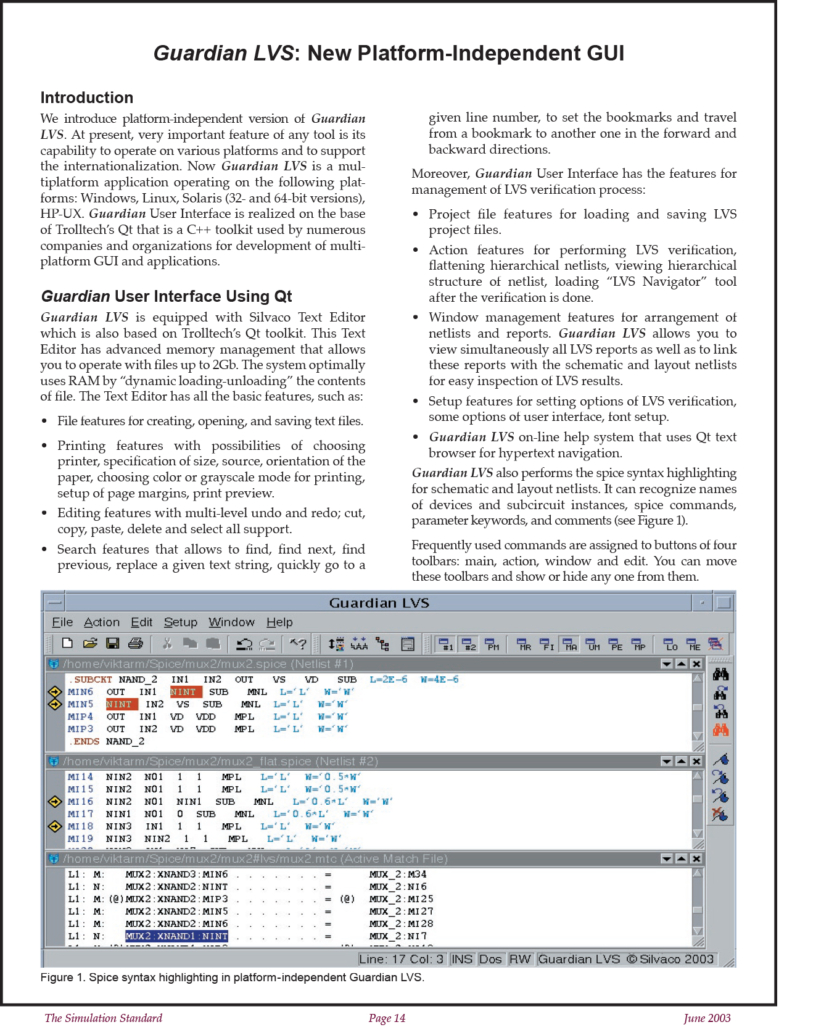
Guardian LVS: New Platform-Independent GUI
We introduce a platform-independent version of Guardian LVS. An important feature of any tool is its capability to operate on various platforms and to support internationalization. Now Guardian LVS is a multiplatform application operating on the following platforms: Windows, Linux and Solaris (32- and 64-bit versions).
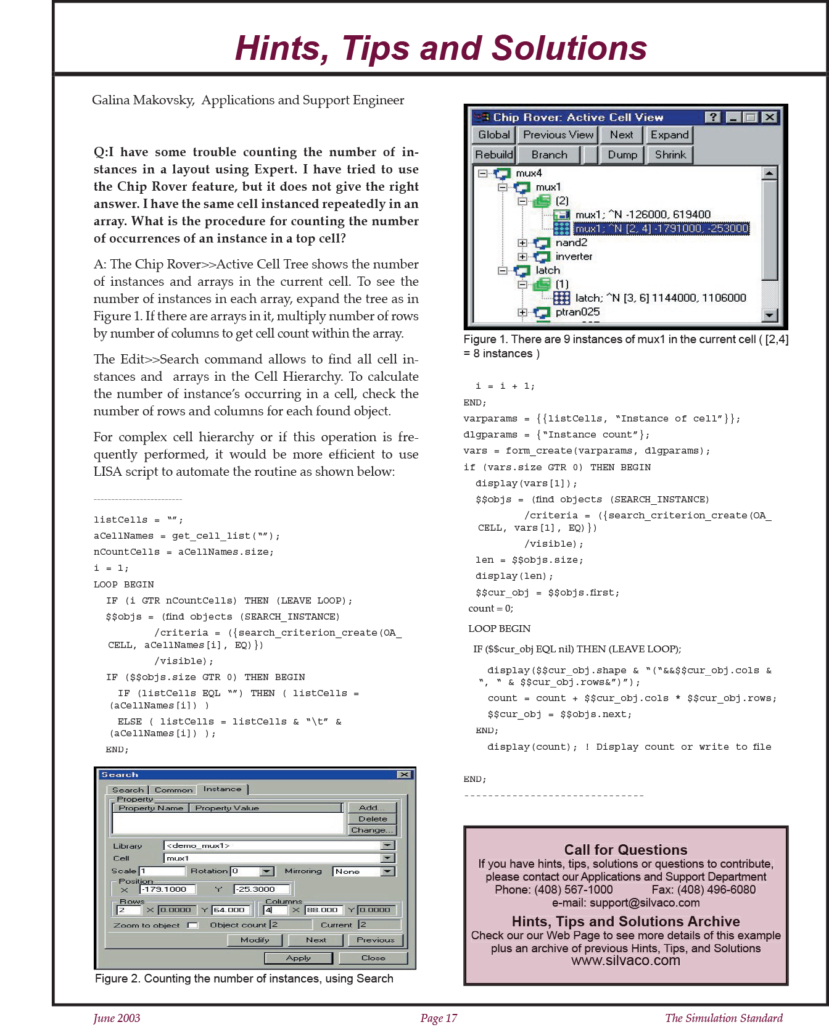
Counting Instances in an Expert Editor Layout
Q: I have some trouble counting the number of in-stances in a layout using Expert. I have tried to use the Chip Rover feature
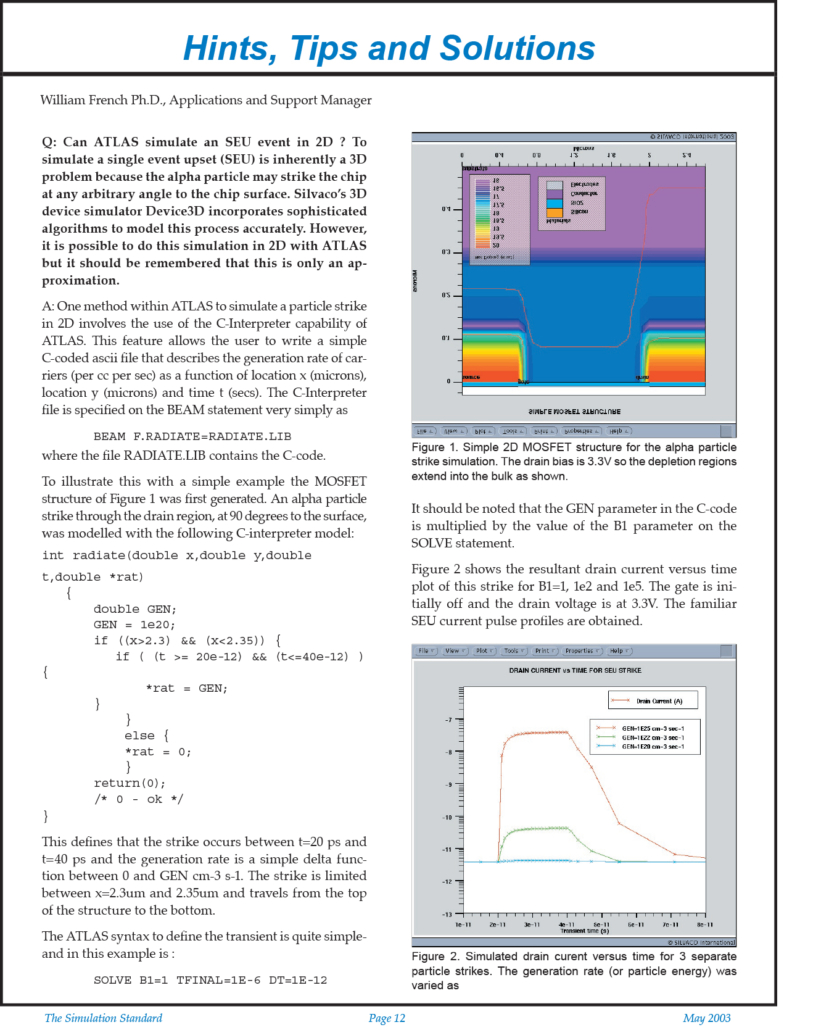
Low Voltage Super Junction MOSFET Simulation and Experimentation
The application of Super Junction concepts to a low voltage power MOSFET is investigated. The body junction is modified with the addition of a high energy implant, resulting in an increased breakdown voltage. Simulations are used to quantify the relationship between dose and breakdown voltage, resulting in a predicted 35% Rds(on) reduction. This is confirmed through experiment, and a 19% reduction in Rds(on) is reported at 75 V. No change in device reliability is observed. This approach provides a simple means to reduce the on resistance of low voltage MOSFETs.
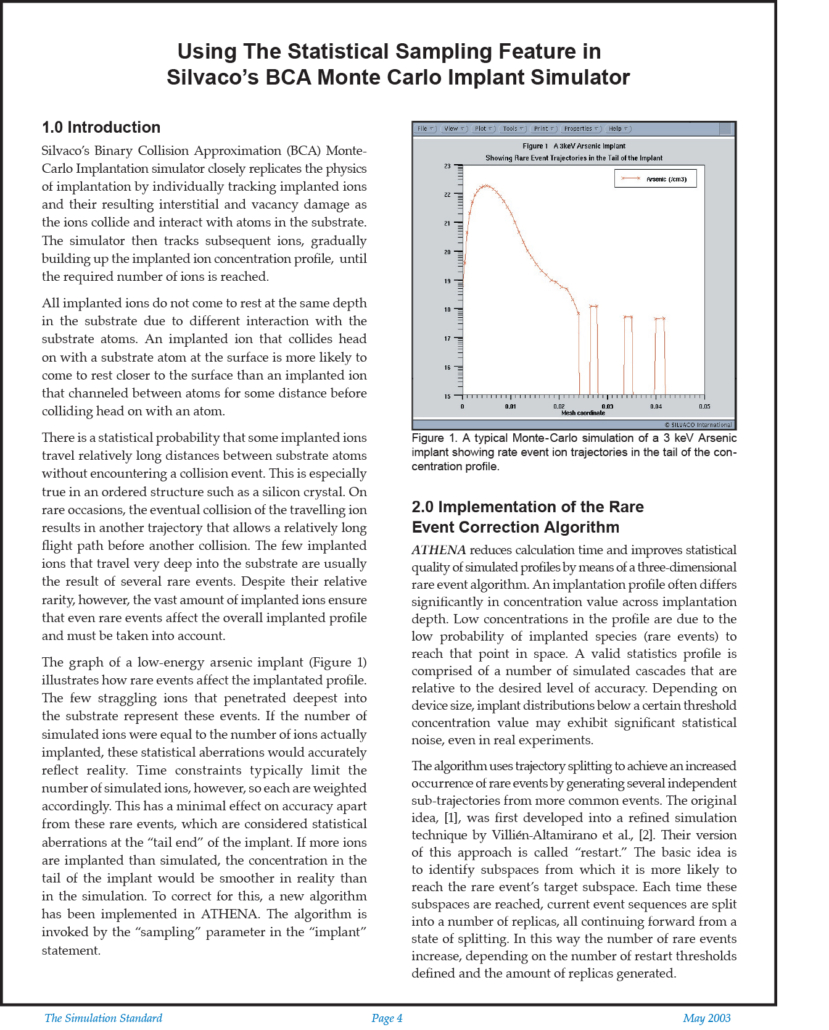
Using The Statistical Sampling Feature in the BCA Monte Carlo Implant Simulator
Silvaco’s Binary Collision Approximation (BCA) Monte- Carlo Implantation simulator closely replicates the physics of implantation by individually tracking implanted ions and their resulting interstitial and vacancy damage as the ions collide and interact with atoms in the substrate. The simulator then tracks subsequent ions, gradually building up the implanted ion concentration profile, until the required number of ions is reached.
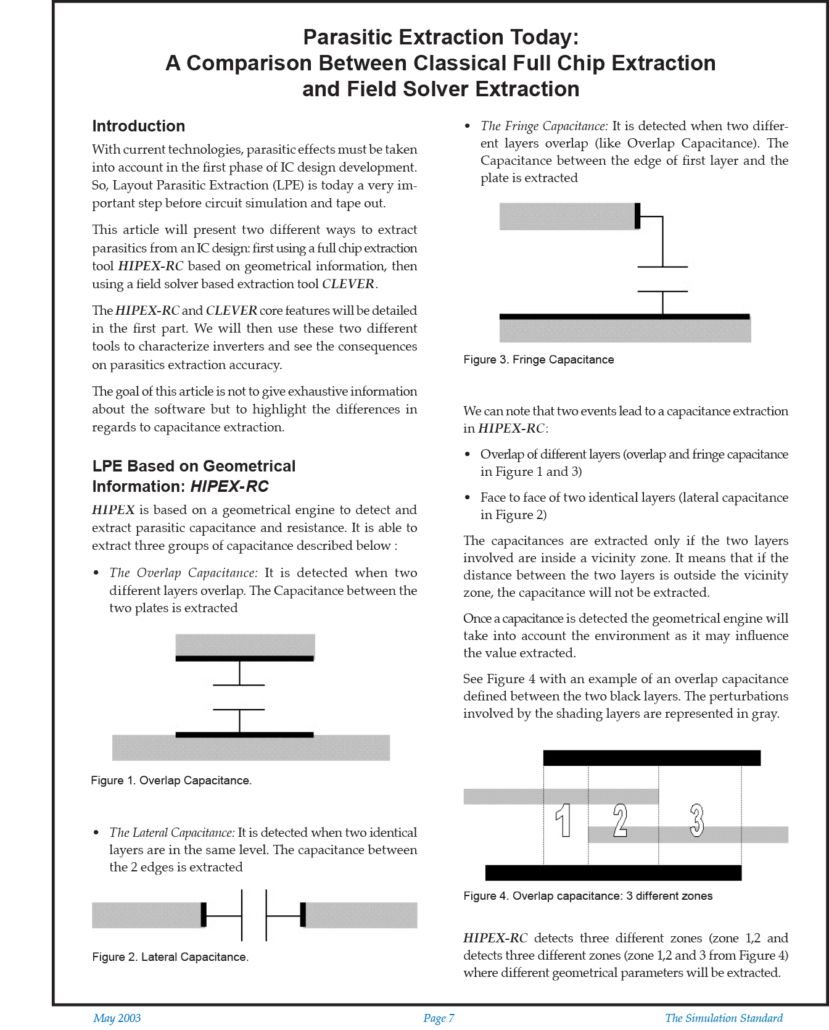
A Comparison Between Classical Full Chip Extraction and Field Solver Parasitic Extraction
This article will present two different ways to extract parasitics from an IC design: first using a full chip extraction tool HIPEX-RC based on geometrical information, then using a field solver based extraction tool CLEVER.

ATLAS Simulation of an SEU Event in 2D
Q: Can ATLAS simulate an SEU event in 2D? To simulate a single event upset (SEU) is inherently a 3D problem because the alpha particle may strike the chip at any arbitrary angle to the chip surface. Silvaco’s 3D device simulator Device3D incorporates sophisticated algorithms to model this process accurately. However, it is possible to do this simulation in 2D with ATLAS but it should be remembered that this is only an approximation.

